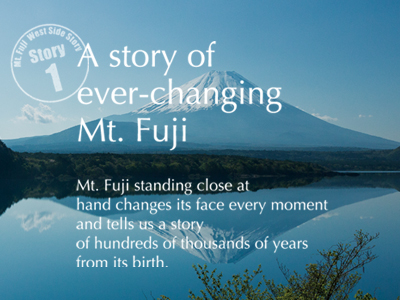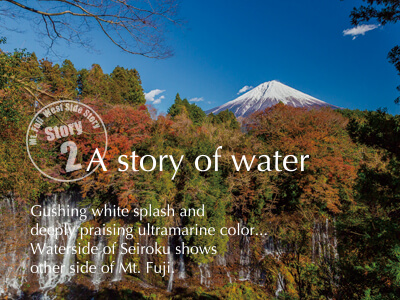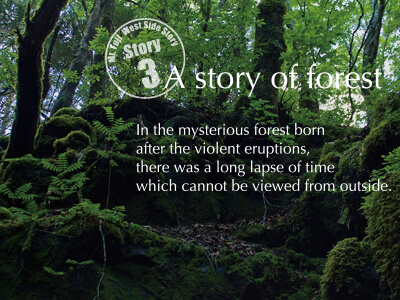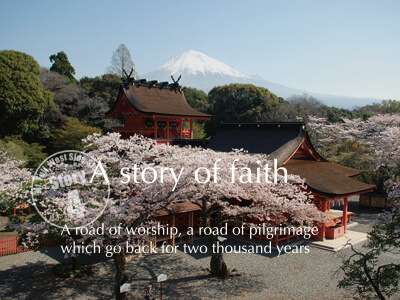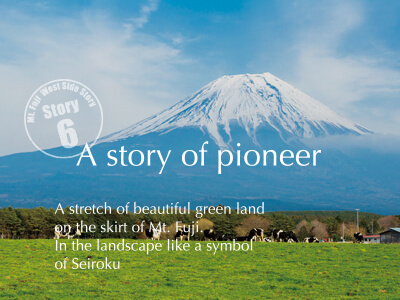
Shiraito-no-Taki WaterfallB-5
Greater volume of water tumbles down like white thread a huge arch-shaped rocky cliff with the size of 20 m high and 150 m long. Different from other falls which have an upper river, water comes from Mt. Fuji, welling up from the ground after filtering through lava layers. It shows how much Mt. Fuji is filled with abundant water. Minamoto no Yoritomo who visited here when he came for hunting at Mt. Fuji described its beauty with Waka. At the Fujiko days, it was an important holy spot of pilgrimage.
※Waka
A classical Japanese poem format, 31-syllable verse form with five lines in a 5-7-5-7-7- pattern.
By a roadside in Westside, there was a world of surprisingly rich water.
Some waterside makes a loud noise by gushed water and other is enveloped in a silence....
The world of water which suddenly appears at the foot of Mt. Fuji that do not have river on its mountain body is reflecting rare mysteries of nature like a mirror.
Another side of Mt. Fuji that holds people in awe as a malignant volcanic mountain.
Mt. Fuji has enriched the land, cultivated lives, and blessed worshippers who climb the mountain as a holy place.
And then, the waterside brings refreshing moment to visitors...
Motherly Mt. Fuji was here.

ObinmizuB-5
It is near “Shiraito-no-Taki Waterfall”. The pond is clear like a mirror and water is welling up from the ground. The legend that Minamoto no Yoritomo fixed his hair at the pond gave the name to the place. It was one of the important holy spots in Westside along with “Hitoana” at the Fujiko days.
※Minamoto no Yoritomo
A military general in the Kamakura period (1192) and the first Shogun who founded the Kamakura Shogunate.
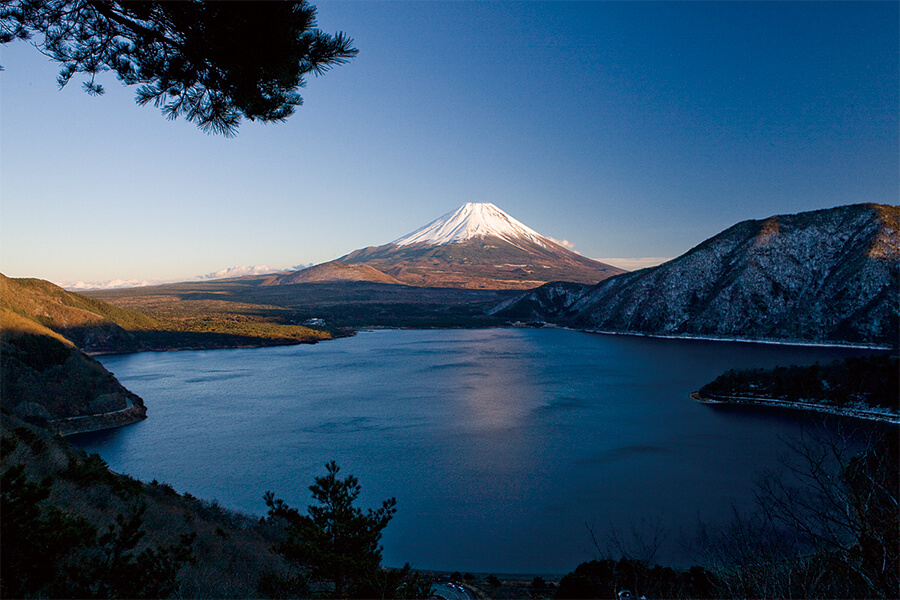
Himemasu (Kokanee) in Lake MotosukoB-5
Kokanee can only live in clean, cold water. Lake Motosuko is rare fishing spot in Japan. The flesh is pink and has no distinct smell of freshwater fish. It tastes excellent and is good eaten as Sashimi.


Jimba-no-Taki WaterfallB-5
It is in the Inokashira village that is a preservation natural spring district. In Kamakura Period, Minamoto no Yoritomo pitched a camp when he was hunting (Makigari) in Westside. The fall consists of water from upper stream and water welling up after filtering through lava layers. The shape is like a small-scale Shiraito-no-Taki Waterfall, but this is a little-known good spot which allows you to go close to the waterfall basin.

Trout fishing and WasabiB-5
Located near Jimba-no-Taki Waterfall, rainbow trout and Wasabi are cultivated using well water blessed from Mt. Fuji. Visitors can enjoy fishing and barbeque while refreshing with clear, cold springwater. This is ideal as a leisure activity in summer.
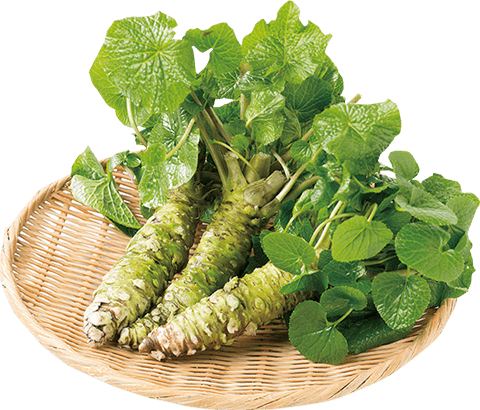
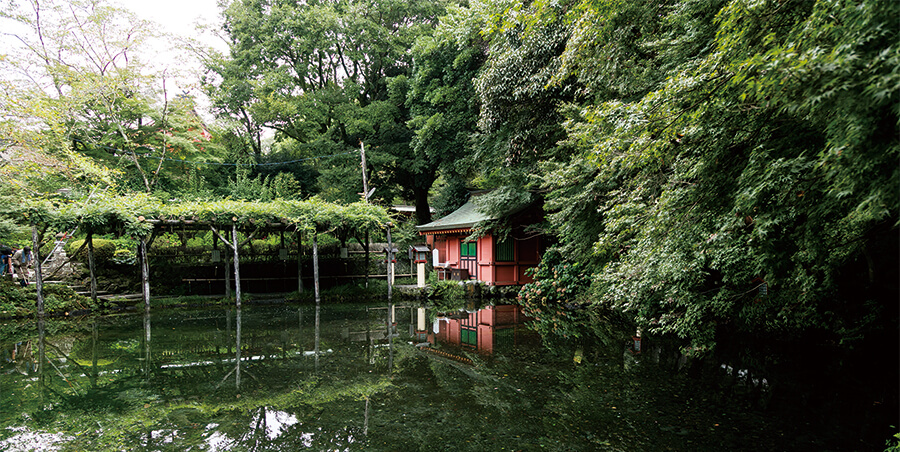
Wakutamaike PondB-5
Well water which comes from snow melt on Mt. Fuji is gushing in the precincts of “Fujisan Hongu Sengen-taisha Shrine” in Fujinomiya City. The main enshrined deity, “Konohanano sakuyahimeno mikoto”, was enshrined at hongu as a water virtue goddess in order to bring volcanic eruptions under control. It is said that this place was selected because miraculous water wells up. In old times, it used to be a place for purification before Mt. Fuji pilgrimage. There are many visitors who are praying for water virtue still today.

Local Sake brewed with Mt. Fuji water
Abundant with well water, Seiroku is dotted with several Sake breweries. Fujimasa Sake Brewery brews sake at Asagiri Food Park. The popular label,“Genkotsu,” is a sharp sake with dry, refreshing flavor.



